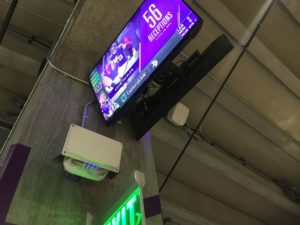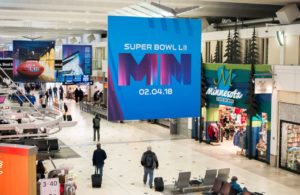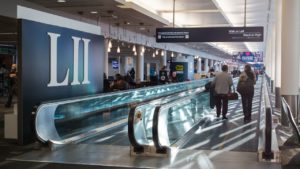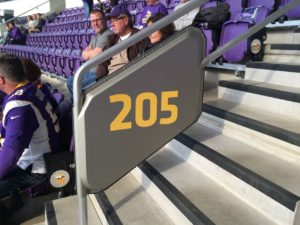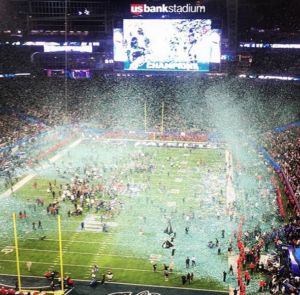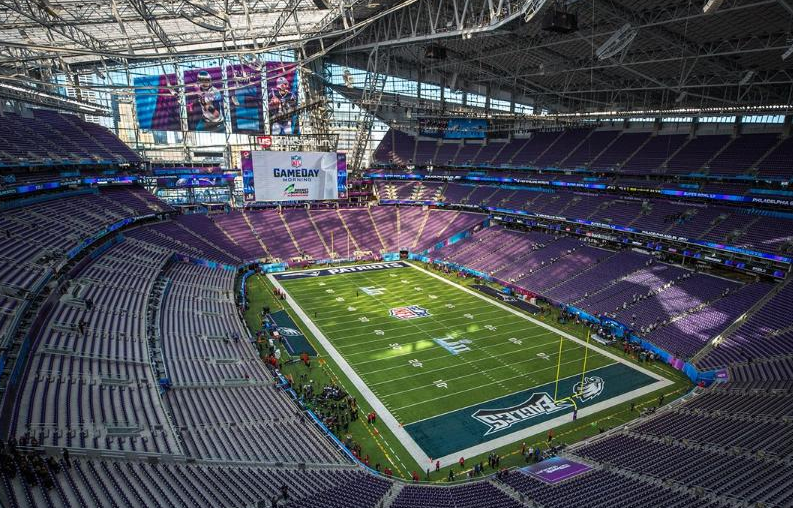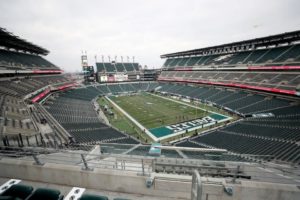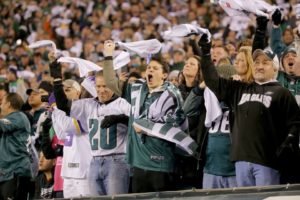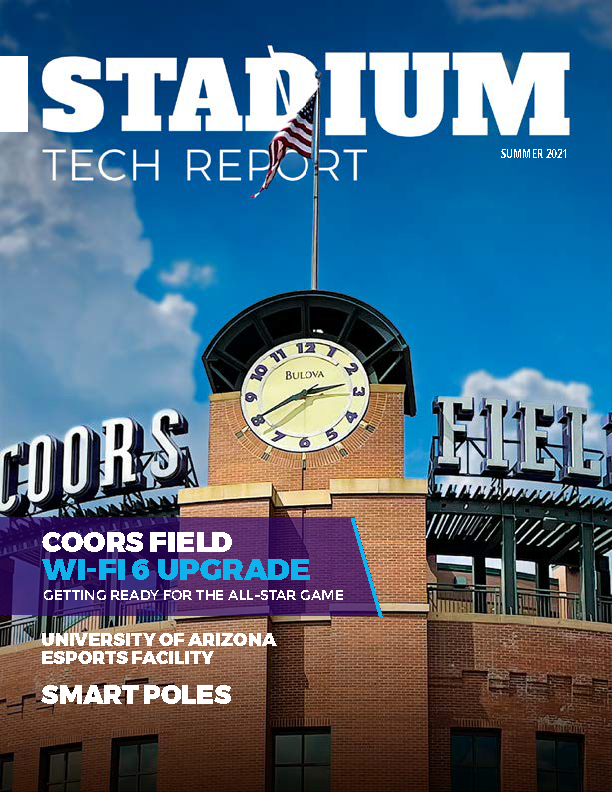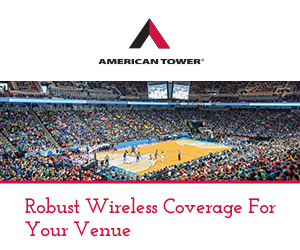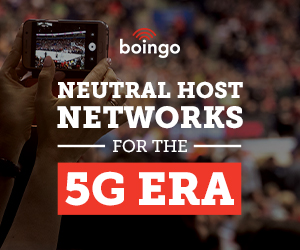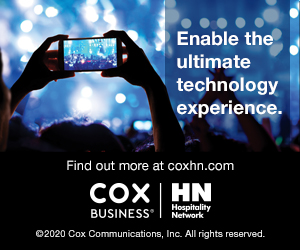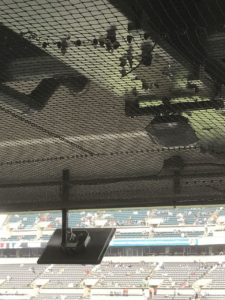
Everest Wi-Fi APs (lower left, middle right) mounted underneath an overhang at Lincoln Financial Field in Philadelphia. Credit: Panasonic (click on any photo for a larger image)
Though Everest representatives claimed that business is normal and usual, the emergence of Everest as a standalone company is a recent thing, even according to news clips posted on the company website. There, reports of some recent customer wins and news accounts of a high-traffic showing at an Everest-powered network at the Philadelphia Eagles’ Lincoln Financial Field all refer to the equipment as being from Panasonic, or as “The Everest Network Solution by Panasonic,” as a Panasonic press release describes it.
Apparently a recent reorganization at Panasonic caused the change in the marketing structure around the Everest product line; the products themselves have drawn interest in the stadium Wi-Fi market for their advertised ability to provide wider and deeper coverage patterns than other existing products.
Though Everest COO Simon Wright said in a phone interview Friday that “nothing has changed from a product perspective” and that the relationship between Panasonic and the Everest product is “exactly the same,” according to several sources the internal reorganization has eliminated multiple jobs inside Panasonic related to Everest, and caused the formation of the standalone Everest entity, which according to Wright’s own LinkedIn profile happened just last month. According to Wright, the headquarters office is in Santa Clara, Calif., is “within sight” of the San Francisco 49ers’ Levi’s Stadium.
New models, new deals?
While the explanation about the change of business direction from the Panasonic side will have to wait — Panasonic has not yet replied to our inquiries — according to Wright the Everest business is looking good, with new models coming out as well as some new (yet unannounced) customer wins in the near-term pipeline. According to Wright one of the new products is a Wi-Fi AP that can send a signal 300 feet, an attractive option for stadiums and venues with high overhangs that need to reach distant seats. One of the advantages touted by Panasonic and now Everest is that its APs include multiple radios, reducing the amount of actual hardware that venues may need to deploy.
However, no Everest stadium customers have as of yet agreed to allow any up-close testing or provided any detailed season-long performance metrics. While team officials at the Philadelphia Eagles have provided praise for the Everest gear in press releases, they have not yet answered requests for live interviews. John Spade, CTO for the NHL’s Florida Panthers and BB&T Center in Sunrise, Fla., has tweeted favorably about a Panasonic/Everest deployment at the arena whose networks he oversees, and said in subsequent messages that he hopes the equipment line will continue.According to Wright, the path ahead for Everest is a typical one for a startup, with hiring and funding tasks part of the mix. While he would not provide a total of funding that Everest has to operate, or how many members it has on its team, he did say that Panasonic remains a major investor and will continue to resell and promote the product line.
“They [Panasonic] just secured a major contract for us,” Wright claimed. “They will continue to be an important partner for us.”

